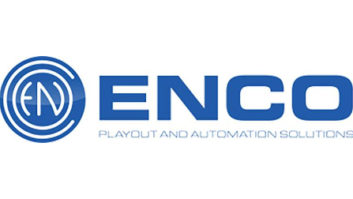(click thumbnail)You know about plenum cables; in many installs, they are now required. But do you know what “plenum” means? Do you know what is done to a cable design, and in cable testing, to get there? Probably not, and I don’t blame you. The architect, fire marshal or director of engineering told you to use plenum cables, so you use plenum cables.
Sure, these can be three or four times the cost of the non-plenum cables. But, as my friends in New York City say, it is what it is.
If you look up plenum in the dictionary, it will tell you, among other things, that a plenum is an “air bag,” a place where air is held at a different pressure than air outside. If you ever saw someone playing the bagpipes, that bag he’s squeezing to move the air is a “plenum.” But the “bag of air” we’re concerned with is in a drop ceiling or raised floor. Often, these are connected to the building return for the air conditioning. So anything that’s burning up there (or down there) will have the smoke and fumes sucked out and nicely distributed to the rest of the building.
NFPA
Awareness of the whole “plenum” thing got started after a number of nasty mishaps involving fire and plastic. Among them were a Bell System central office fire in New York in 1975 and the MGM Grand fire in Las Vegas in 1980. The latter was notable because “scrubbers” in the air conditioning, designed to handle dust and soot, reportedly removed the smoke but left toxic fumes that were fed to the rest of the hotel.
For the Europeans, there was the rocket attack on HMS Sheffield, a British ship, during the Falklands War with Argentina in 1982. It was rumored in the general press that many of the deaths were attributed to burning cable and other plastics.
In the United States, such events led the National Fire Protection Association to modify its guidelines, the National Electrical Code, to require “plenum” cables in the United States. You can get a copy at any technical bookstore.
This is a voluntary organization. It is not a governmental body. Theirs is a voluntary code, not a law.
However, if your local fire marshal, planning board or other AHJ – “authority having jurisdiction” -decides to adopt the NEC, as many have, then it is law. Some cities or counties (Las Vegas, Chicago, Los Angeles) have written their own codes. So if you’re doing an installation in a strange city, better find out what they require or they may make you tear it out.
There are many fire ratings for cables; the top grade is plenum. These cables are subjected to a special process called the Steiner Tunnel Test. This tests the cable for flame spread and smoke emissions, among other things. The test requires that the components of the cable resist burning, so many special compounds are used. The two most common are various versions of Teflon, a product made by DuPont, and special PVC versions that can be mixed to resist burning.
But someone noticed that you don’t install just one or two cables. Some places have thousands of cables. The “fire load” in a bundle of cables is different from that of the small amounts tested in a Steiner Tunnel. So data cables, and now video cables, are coming out with “LC” versions, for “limited combustibility.” These cables are entirely Teflon.
You will find, of course, that these cables are even more expensive than regular plenum cables. But the alternative is conduit, and that’s not cheap either.
In fact, in most installs, the cost of the wire and cable is 5 to 10 percent of the cost of the entire installation. So, put in perspective, even LC cables aren’t the budget-killer that you might expect. And, of course, the liability aspects of using lower fire ratings are another whole kettle of fish. Don’t ask me! Go talk to your lawyer!
Order a copy of the National Electrical Code by calling (800) 344-3555. More information about cable manufacture and hazards can be found online at sites such as www.cablingsolutions.dupont.com and www.cablefireresearch.com.













